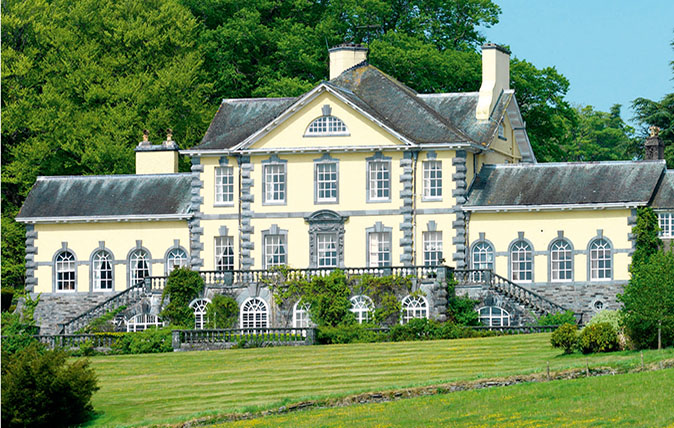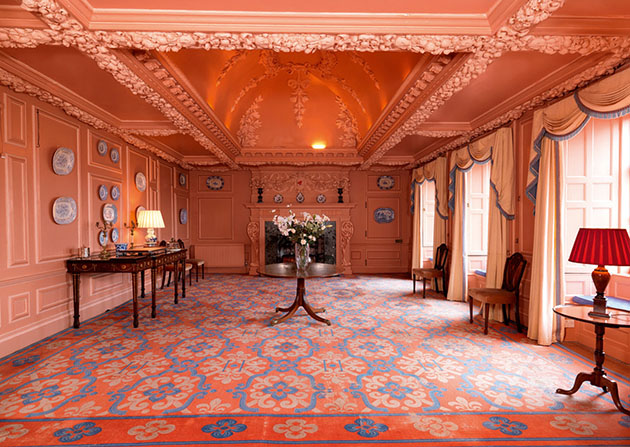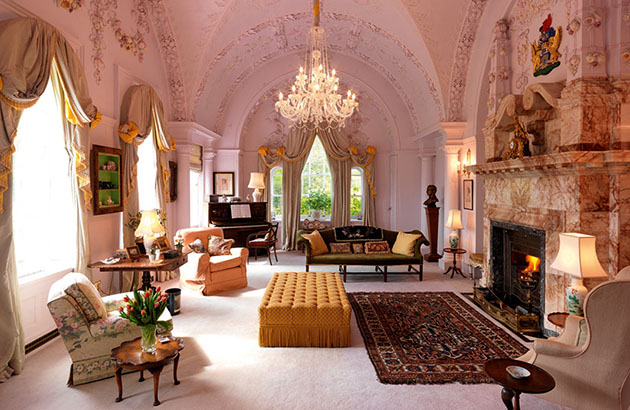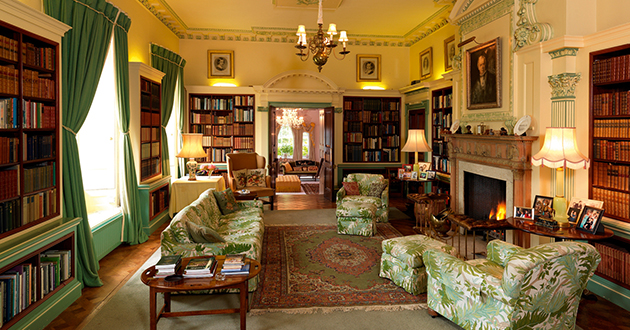John Nash's Welsh masterpiece
This Welsh masterpiece is the finest piece of John Nash architecture still in private ownership


Although generally best known for his later work on London’s Regent’s Park, Regent Street and Buckingham Palace, and his redesign of the Royal Pavilion in Brighton, the architect John Nash had earlier left his mark on the old Welsh counties of Pembrokeshire, Carmarthenshire and Cardiganshire, where family connections brought him dozens of commissions over a 10- year period between 1785 and 1795.
An eclectic body of work included public buildings, church work, bridges and new country houses, among them Llanerchaeron in Ceredigion (now owned by the National Trust), and Ffynone near Boncath, 10 miles from Cardigan in scenic north Pembrokeshire, considered by his biographer Terence Davis as ‘perhaps the most successful of Nash’s early houses, quite plain, well-mannered and with a great sense of style’.

The former home of the late 3rd Earl Lloyd George of Dwyfor and still owned by a Lloyd George family member, Grade I-listed Ffynone, set in 35 acres of landscaped gardens, park and woodland, is now on the market through Savills (020–7016 3820) at a guide price of £1.75 million. One of only three of John Nash’s Welsh houses to survive, Ffynone stands ona hill shared by all three south-western counties, a setting described by Richard Haslam (COUNTRY LIFE, November 12, 1992) as ‘among the most picturesque adopted in the architect’s early career in Wales’.
The Ffynone estate was bought in 1752 by Capt Stephen Colby, from a Pembrokeshire branch of an old Yorkshire military family, whose nephew, Col John Colby, engaged Nash to build him a ‘rigorously symmetrical’ Georgian villa on the site in about 1790. The foundations for the new house were blasted out with gunpowder two years later, after which building took place at a leisurely pace, due to Col Colby’s intermittent financial problems.

It was a time when the seductive lifestyle enjoyed by sporting Welsh landowners led many of them to build new country houses ‘elegantly maybe, although often beyond their means,’ Mr Haslam observes.
Nevertheless, the main works were completed by 1796 under local contractors, although it was 1800 before Ffynone was finally furnished. In the meantime, 60,000 trees were planted, supplied by John Mackie of Norwich at a cost of £21 12s 6d.
Col Colby died in 1823 and, within a few years, the substantial sum of £577 had to be spent on strengthening Fynone against the weather: builders William Hoare & Son re-covered the roof in North Wales slate, fitted hardwood window sashes and probably added the stables and the ornamental clock tower. By the late 1800s, Ffynone had passed to Col Colby’s grandson, John Vaughan Colby, who blithely went off to shoot bears in Siberia, having told his wife, Annie, that, during his absence, she could have the house improved in any way she wished.
Exquisite houses, the beauty of Nature, and how to get the most from your life, straight to your inbox.
She took him at his word and, between 1902 and 1907, the architect and garden designer Inigo Thomas was commissioned to redesign the entire garden front, transforming John Nash’s dining room into a library and adding wings to either side of Nash’s original building—a dining room to the east and a ballroom, now a music room, to the west. The basement was extended to form the loggia, balustrade balcony and formal terrace and the attached stable block was also remodelled. Thomas’s wonderfully ornate rooms were examples of an Edwardian opulence rarely seen in the Principality.

Sadly, Vaughan’s son was killed in the First World War and, when he himself died in 1919, the estate passed to his daughter, Aline, who, in 1927, sold it to a Glamorgan businessman, thereby ending 175 years of Colby family ownership. Thereafter, Ffynone’s fortunes waned until, in 1988, the late 3rd Earl Lloyd George of Dwyfor, the grandson of Wales’s most celebrated statesman, bought Ffynone and, with his wife, embarked on a systematic restoration of the house, which by then was riddled with dry rot and damp. It was the realization of a lifetime’s ambition for Lord Lloyd George who, despite his attachment to his Welsh roots, had spent 40 years working in the City of London and only acquired a home in Wales at the age of 63.
Once more a gleaming solitaire in the heart of the Pembrokeshire countryside, Ffynone, with its splendid reception hall, glorious reception rooms, 13 bedrooms and eight bathrooms, plus gardens revamped by Thomas, was to be one of the great joys of his retirement.

